41st FA. Brigade
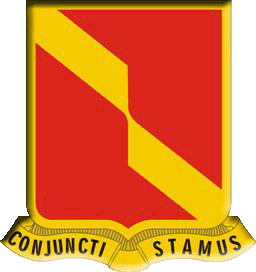
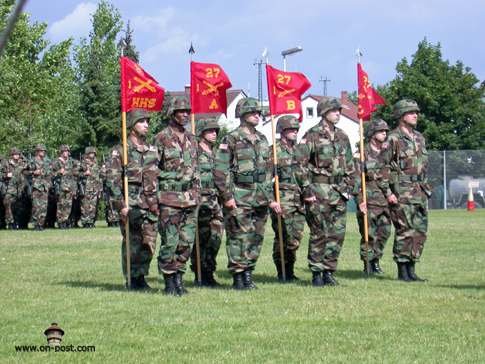
27th Field Artillery  Distinctive Unit Insignia Description A Gold color metal and enamel device 1 inch (2.54 cm) in height overall consisting of a shield blazoned Gules, a bend fracted Or, and attached below the shield a Gold scroll inscribed “CONJUNCTI STAMUS” in Black letters. Symbolism The shield is red for artillery. The bend fracted represents the break in the history of the organization between its origin as a World War I unit and its reconstitution in 1923. Background The distinctive unit insignia was originally approved for the 27th Field Artillery Regiment, Regular Army Inactive on 28 May 1935. It was redesignated for the 27th Field Artillery Battalion (Armored) on 11 September 1940. It was amended to correct the unit designation to the 27th Field Artillery Battalion on 7 November 1940. It was redesignated for the 27th Constabulary Squadron on 4 December 1946. The insignia was redesignated for the 27th Armored Field Artillery Battalion on 19 September 1952. It was redesignated for the 27th Artillery Regiment on 5 December 1957. It was redesignated for the 27th Field Artillery Regiment on 8 December 1971. The insignia was amended to reflect the current history on 18 July 1984.  Coat Of Arms Blazon Shield Gules, a bend fracted Or. Crest On a wreath of the colors Or and Gules, issuing fesswise to the dexter and sinister from an escallop of the first, two demi-battering rams Vert banded and headed Argent ringed and armed of the first ensigned with a star-shot of seven spikes of the fourth flammant of the like bearing a roundel barry of six of the first and second. Motto CONJUNCTI STAMUS (United We Stand). Symbolism Shield The shield is red for artillery. The bend fracted represents the break in the history of the organization between its origin as a World War I unit and its reconstitution in 1923. Crest The star-shot is a medieval missile provided with spikes for inflicting extra damage. It simulates the blazing star on the shield of the province of Salerno in central Italy. The gold and red bars on the roundel are from the arms of the city of Salerno. The star-shot and roundel represent the unit’s outstanding role in the invasion of Salerno. The spikes are seven in number in reference to the seven World War II campaigns in which the organization participated. The escallop shell refers to the Mediterranean Sea from which the unit launched an assault landing in North Africa, which is represented by the two battering rams. Background The coat of arms was originally approved for the 27th Field Artillery Regiment, Regular Army Inactive on 31 May 1935. It was redesignated for the 27th Field Artillery Battalion (Armored) on 11 September 1940. It was amended to correct the unit designation to the 27th Field Artillery Battalion on 7 November 1940. It was redesignated for the 27th Constabulary Squadron on 3 December 1946. The insignia was redesignated for the 27th Armored Field Artillery Battalion on 19 September 1952. It was redesignated for the 27th Artillery Regiment on 5 December 1957. It was amended to add a crest on 9 November 1964. It was redesignated for the 27th Field Artillery Regiment on 8 December 1971. The coat of arms was amended to reflect the current history on 18 July 1984. insignia was redesignated for the 27th Armored Field Artillery Battalion on 19 September 1952. It was redesignated for the 27th Artillery Regiment on 5 December 1957. It was amended to add a crest on 9 November 1964. It was redesignated for the 27th Field Artillery Regiment on 8 December 1971. The coat of arms was amended to reflect the current history on 18 July 1984. |
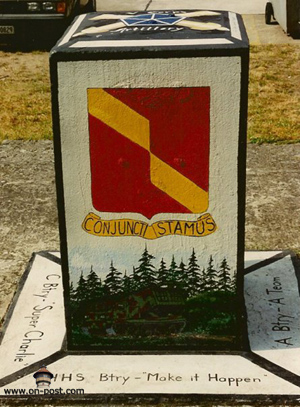

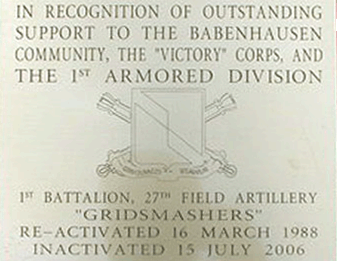
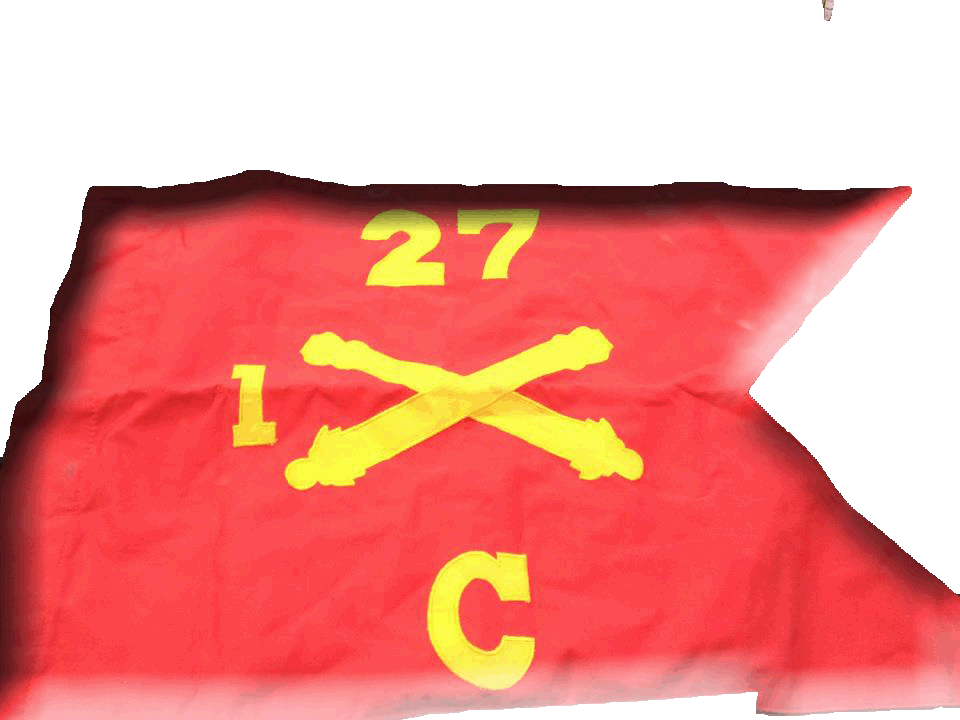
_________________________________
1st 27th FA 2006
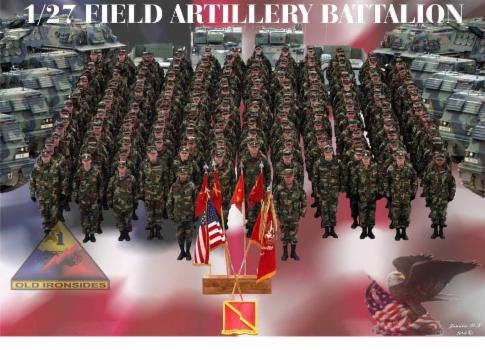 ©233rd BSB
©233rd BSB
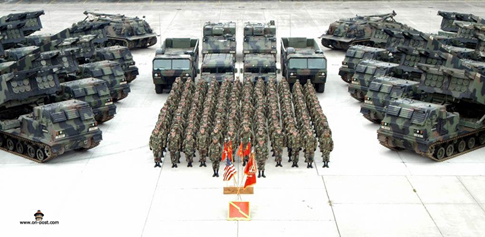 ©233rd BSB
©233rd BSB
HHS 1st 27th FA Change of Command
6/15/04
All Pictures by © VdR Aschaffenburg
_______________________________
HHS 1st 27th FA Award Ceremony
10/29/04
All Pictures by © VdR AschaffenburgLTC Braun (left)
Army Achievement Medal
listen to LTC Lee's speech.
Used with permission from VdR Aschaffenburg ©2011
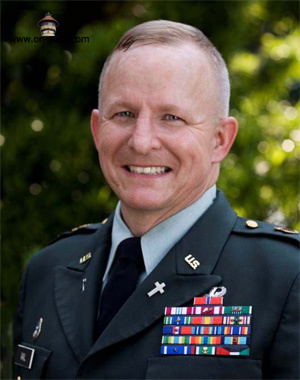
Chaplain (Colonel) Thomas C. Vail
1989 - 1991
(click here to read Biography)
D-Day's 60th Anniversary
6/6/2004Normandy, France
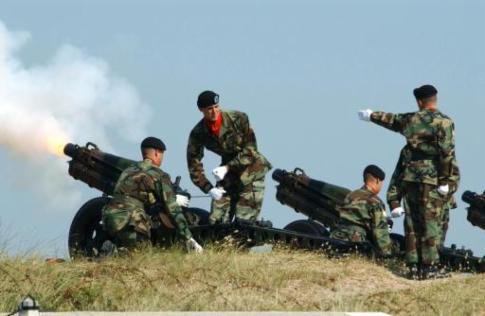
Members of Charlie 1/27th FA, Babenhausen Kaserne, Germany, perform a 21-gun salute with 75mm howitzers during the US-sponsored ceremony at Utah Beach to commemorate the 60th Anniversary of the D-Day landings.
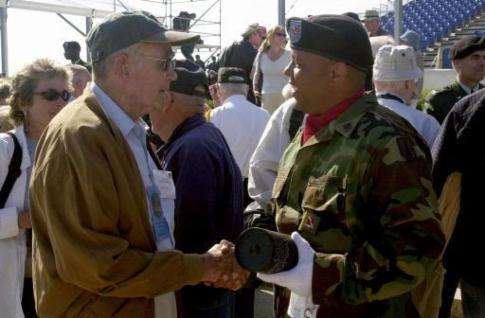
US Army Specialist Fourth Class Cory Lovejoy, Charlie 1/27 Field Artillery (FA), Babenhausen Kaserne, Germany, presents World War II veteran First Lieutenant (Ret) Frank Hertzog, with an empty shell casing from a 75mm howitzer following the 21 gun salute during the US-sponsored ceremony at Utah Beach commemorating the 60th Anniversary of the D-Day landings in Normandy
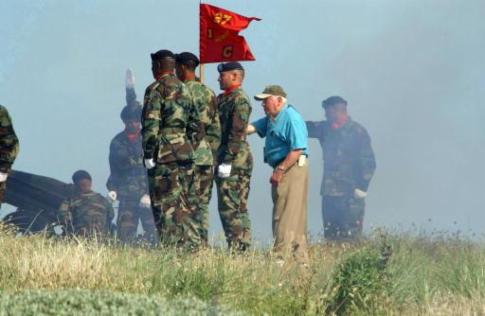
Mr. Irving Smolens, a veteran of the US Army Bravo Battery, 29th Field Artillery, , assists the salute battery of Charlie 1/27th FA, Babenhausen Kaserne, Germany, during a 21-gun salute at Utah Beach during a ceremony held to commemorate the 60th Anniversary of the D-Day landings.
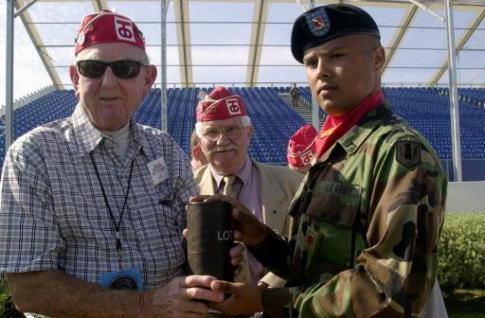
US Army Private First Class Benjamin Dudley, Charlie 1/27 Field Artillery, Babenhausen Kaserne, Germany, presents World War II veteran Private Robert Levine, 90th Division, K Company, 358th Infantry, with an empty shell casing from a 75mm Howitzer after the 21 gun salute during the US-sponsored ceremony at Utah Beach commemorating the 60th Anniversary of the D-Day landings in Normandy.
All Photos © Defense Imagery.mil
_________________________________

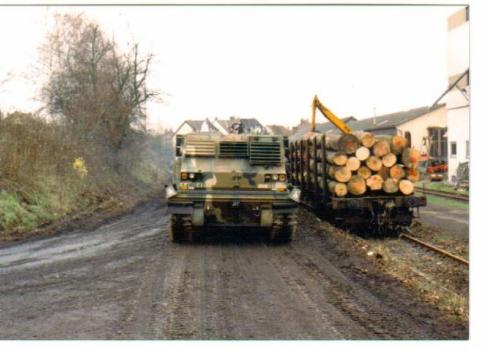
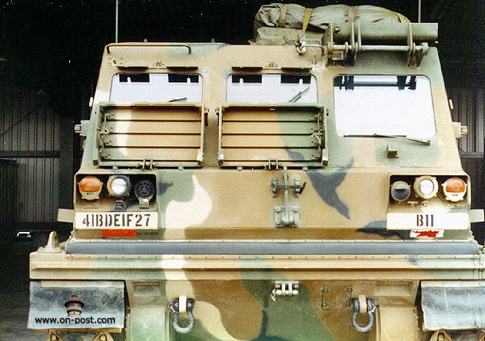

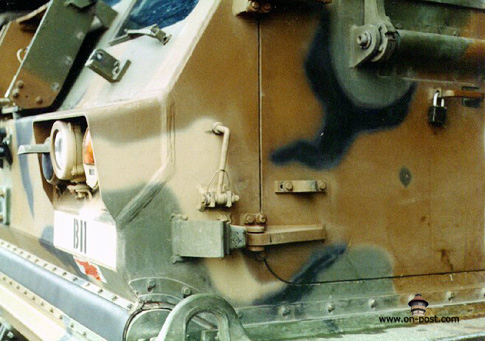
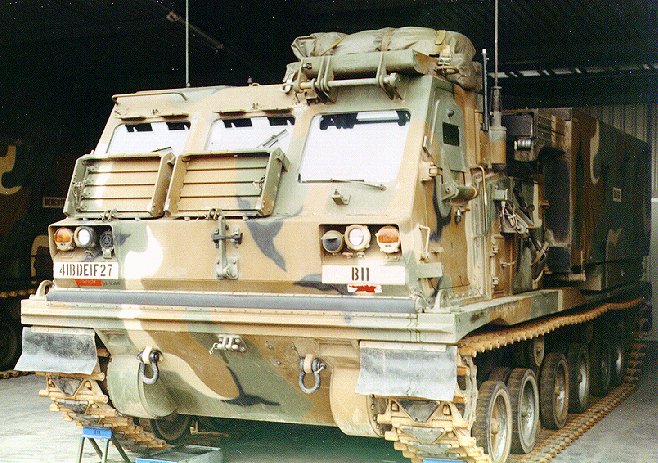
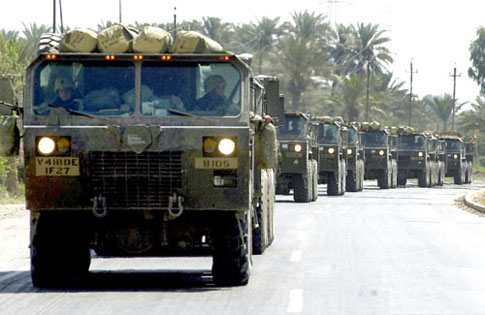
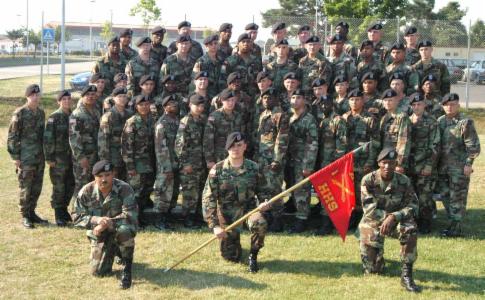 ©233rd
BSB
©233rd
BSB
_________________________________
1st 27th FA in Desert Storm
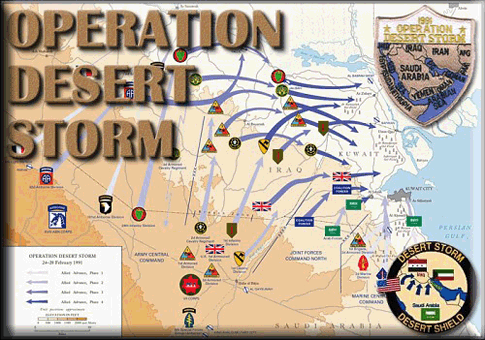
_________________________________
VII Corps Artillery
(3rd/20th FA, 155SP & 1st /27th MLRS) were assigned to the 42nd Field Artillery Bde during Desert Storm
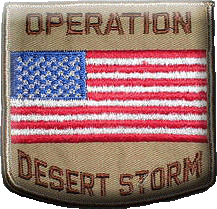
Desert Storm by Major Mark S. Jensen This article is a melding of three articles by Major Jensen on the multiple launch rocket system (MLRS) operations of the 1st Battalion, 27th Field Artillery (1-27 FA) 42d FA Brigade, in operation Desert Storm marked MLRS' trial by combat. The MLRS batteries and battalions from the Active and Reserve Components, adding their fires to those of cannon artillery, engaged stroyed a wide variety of targets in support of diverse offensive operations. One such unit, 1-27 FA, deployed from Babenhausen, Germany, to Saudi Arabia in support of Operation Desert Shield on 17 December 1990. The battalion fired in support of the 1st Cavalry, 1st Infantry and 3d Armored Divisions. This article recounts some of the battalion's experiences and cites a few of the many lessons learned. MLRS Raids The first rockets fired in anger on 13 February were part of a three-battery MLRS raid conducted under the control of the 1st Cav Division Artillery (Div Arty). The mission required a daylight road march by batteries and passage-of-lines to an assembly area forward of the main defensive line, movement to forward firing positions and delivery of fires against high-payoff targets. Then the battalion had a rearward passage-of-lines and a night road march to battery positions. February 3 was the date ordered for the raid. Three firing batteries—A-21 FA (1st Cav MLRS battery, also called Rocket Battery) along with B and C/1-27 FA—conducted forward passage-of-lines and occupied Assembly Area Red. A raid command post (CP) was established with the battery fire direction centers (FDCs) and two high-mobility wheeled vehicles (HMMWVs). Two hours later after final brief backs and pre-combat checks, launchers moved out for the update area. C/1-27 and A-21 were designated as shooters to engage high-payoff targets (HPTs). These included D-30 artillery battalions and M1946 batteries, brigade CPs and maneuver force positions. Targets were input manually in the battery FDC. Most were irregularly shaped and required "hand jamming" at the battery fire direction system (FDS). Launcher section chiefs carried hard copies of the targets on 3x5 cards. B/1-27's mission was counterfire. If Iraqi artillery fired, a Div Arty Q-37 radar passed target grids by voice to the raid CP. Battery B would engage each of the first three targets located with 36 rockets and exit the position. If no counterfire was required, the battery was to engage additional HPTs. Here's what the raid was like. Raid I Looking back to the south, the advance party saw the haze part as the vanguard of the battalion, moving in desert wedge formation, crested the horizon. Launchers moved easily at 25 miles per hour over the rutted terrain. M577s managed to keep pace, with an effort, while the occupants of the HMMWVs held on for dear life and cursed the tankers whose tracks had destroyed the smooth desert surface. The first battery to arrive in the assembly area moved into position, and using north as 12:00, occupied an arc stretching from 10:00 to 2:00. The FDCs moved to the center of the position. As ramps dropped, the crew scrambled to erect the OE-254 antennas that allowed them to communicate over the distance to the firing points. The other two batteries, arriving at 10-minute intervals, duplicated the drill, circling the wagons in the same fashion as their cavalry forebears of 100 years ago. Operations tracks grouped together forming a "T" with the battalion commander's and S3's HMMWVs backing up to the base. Platoon leaders and sergeants moved quickly to launchers, supervising prefire checks and going over, for the hundredth time, the details of the operation. Battery commanders' (BCs') vehicles pulled to the center, the BCs gathering around the hood of the "Old Man's" vehicle. A quick check yielded good news: none of the launchers had broken down on the march. Good natured bantering broke out among the BCs, the volume of the laughter giving a hint of the adrenalin flowing. This was the first mission—long awaited. It marked the first time MLRS would be fired in anger—the first movement into harm's way. "Okay fellas—cut the BS. We've got a lot to do before moving out. We'll have time to screw around after this is done," said the battalion commander. "We've got two things to accomplish here today. Our mission is to destroy the high-payoff targets the Div Arty [1st Cav] has given us. We're part of the deception plan that will show the other side our main effort will come along the Wadi A1 Batin. Our guys will get their first taste of action, and the rest of the Army will see what the system is capable of for the first time. This is important. Don't screw it up." Removing his helmet and placing it on his HMMWV's hood, the battalion commander ordered the S3 to review the operation. "Sir, the plan is unchanged. We'll do this just like we rehearsed it. The Div Arty says the HPTs they got from Corps [VII Corps] are solid. We're going to engage a couple of artillery battalions and at least two brigade CPs. The Div Arty's controlling headquarters and handles the interface with VII Corps. We control all MLRS fires and report to them. "The armored cavalry screens have already moved forward and secured the area around the firing positions. Our passage forward of the brigade positions went smoothly. The brigade S3 was just in here—he tasked one of his mine plows to plow a road for us to use on the way out. We have a good link up with them here, and they'll provide guides out of position tonight to avoid our straying through the task force positions to our rear. Coordination with the Cav FSO [fire support officer] was done yesterday. Nobody wants any surprises on this one. "Battery advance parties move out at 1630 to set up the update areas. At 1700 and 1705, A-21 and C/1-27 move to the update area. The two Bradleys [fighting vehicles] accompany you. You guys are the shooters. Make sure you have a good Met [meteorology data] and that all your launchers have hard copy of the targets with them. The Div Arty says no changes to targets will be made after you move downrange. Distance to the update area is about 13 kilometers—should take 25 minutes to close. "Make sure you have a good spread at the update points. If a launcher goes down there, leave it behind and pick it up on the way back. If there's any slack in the schedule, leave the launcher behind at the update area. Report your arrival at the update area and SP [start point] to the firing positions. It'll take you 15 minutes to cover the six kilometers to the firing positions. We want you in position 15 minutes before time to fire. Report your arrival in H-minus 10 minutes, we'll give you the command to lay LLMs [launcher loader modules]. Report laid and ready. "When you get the command to fire, get your rockets off, stow the LLMs and move off the point ASAP. Cymbelline radars have been active, and we don't know their reaction time. They may have planned targets in the area and rounds sitting 'on the trays.' We don't want to be the victims of a lucky shot. Remember, the Marines lost folks to counterfire a couple of days ago. "Bravo, you're the counterfire battery. You SP five minutes after Charlie and move to your firing position. Make sure you have solid communications with us. The Div Arty Q-37 will start to radiate at H-plus five minutes. If the Iraqis respond, the Div Arty will get a location and pass it to us on the Div Arty command net. We'll pass it to you. You put 36 rockets on top of the grid—It's overkill, but what the hell. After firing three missions, you get out of there. If the Iraqis are asleep at the switch and doesn't reply, you engage your HPTs at H-plus 25 minutes and exit the firing positions. "Account for all your launchers and personnel at your rally point and move back along the same route. Confirm your status at the update area and report passing through there. If something breaks down between the firing position and the update area, you're responsible for getting it back with your own assets. Make sure you've double-checked your tow bars and cables and have what you need. We have the M88 and M578 here to recover anything beyond your capabilities. "If there are casualties, your combat lifesavers must stabilize them during the trip back here. The PA [physician's assistant] and the ambulance will take them from you here and complete evacuation to treatment facilities, if necessary. Sir, that's about it," the S3 concluded. "Any questions of the S3?" asked the battalion commander. "If not, here are some things to remember. Your guys are to be pumped up with adrenalin like nothing they've ever experienced.You have to maintain control out there. The march back to the assembly area here is going to be a dangerous time. Make sure you're on top of the formation. When you get back here, take a couple of minutes to cool your folks down before starting the road march back to your battery positions. "You've rehearsed this and know what to do. Good luck. Go back-brief your leaders one last time and report when you're 100 percent ready to go. S3, what's the status of the Met?" The next hour passed slowly. Digital communications were checked and rechecked. At the launchers, chiefs looked over gunners' shoulders as the targets were input and initial computations performed. Solutions were achieved on all targets. Tracks were inspected . . . flak vests adjusted . . . and crews started the "grab assing" and "BS'ing" that accompanies the excitement of "doing it for real" the first time. At 1700, A-21 moved out to the northeast. Battery C, 1-27 FA, followed and the shooters were on the way. Battery C reported A-21 had come too far west and would have to cross its front to get to the update position. Battery C halts to let them pass. At the battalion CP, the commanding officer reached for a fresh dip as the clock moved ahead. Battery B started on time and the last of the launchers disappeared over the horizon in the fading light. Tension increased as batteries reported arrival at the update area. Watches were checked repeatedly. "How many launchers are updated? Any problems? Have they moved out yet? Div Arty wants to know now!" Reports came over the battalion command net and were immediately passed to Div Arty. At the CP, all personnel assumed the same position: ears glued to speakers or headsets, left hands in front of faces to see the watch dial. They waited anxiously for the commanders reports. "Sir, Rocket Battery reports arrival at the firing position." "C Battery is at the RP (rally point)" "B Battery is closed" "S3 confirm H-Hour" "No change, Sir-1815" "Time now?" "1805, Sir. H-minus 10 minutes" "Lay LLMs" BCs "Rogered" the command to lay LLMs. Silence on the nets. "whats the status?" "No reports yet" Then radio came to life-"Rocket reports six laid; the others are moving." "Charlies has eight laid, no report on the other one. The BC's checking it out now" "We're running out of time" More silence on the net. "Rocket has all LLMs laid" "C Battery is laid and ready" "About time,tell them to fire" The command was passed to the FDC's for relay to the launchers. Seconds later a flash.The first launcher fired, and then the width of the horizon was lit as 19 launchers brightened the night. Blazing rocket motors marked the ascending trajectory with a trail of smoke that was lit and relit by succeeding rockets. The assembly area was in complete silence as the first rockets were fired. Then whoops of elation erupted as the second volleys thundered into the darkness. Cameras flashed to cries of "Get some!" "Kick ass!" and "Look at those mothers!" A roar washed over the position. As the firing drew to a close, observers saw the copper-colored flash of the warhead event as the electronic fuzes functioned and thousands of bomblets were released on to the targets below. Then the wait. Were the Iraqis on the ball? Were their radars up? Would they answer back? These guys were supposed to be good! All the nets were silent as the LLMs were stowed. Then Rocket and C Batteries sent initial status reports. One launcher in Rocket had fired once and then shut down- couldn't be stowed. "Drive it out of there now. Clear the firing point ASAP." Battery C seemed okay. "Q-37 is radiating. Nothing observed—yet." "Roger. Pass the word to Battery B. Be ready." Battery C was at the rally point. It was H-plus 15 minutes and still no counterfire. "You got any targets for me yet?" "Relax Bravo, you'll be the first guys we call." "Roger." H-plus 25 minutes. "Sir, it looks like they're not going to fire back." "Tell Bravo to fire his targets." Seconds later, the sky again was lit as another 100 rockets thundered down range. There were more whoops and hollers as the soldiers in the CP cheered the show. "Bravo reports all fired. Can't stow one of his launchers." "Put the jury struts in and tell them to move." "He's doing it now." Battery C almost drove past the assembly area in the dark. "Can you see the red flashing light? Battery C into position with everything okay. The BC quickly reported to the commander and got permission to return to his original battery position. 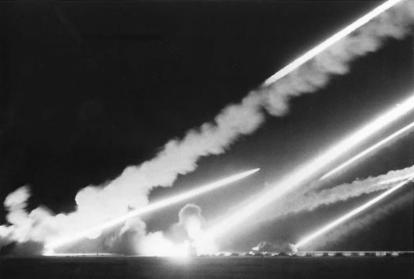 The first MLRS launcher fired, and then the width of the horizon lit as 19 launchers brightend the sky. The glow of blackout markers receded as the battery moved off, following a Cav Bradley acting as a guide. A-21 returned to the firing area. Twenty minutes later, B Battery pulled in. A quick look at the B Battery LLM and the determination was made to move it back to the battery before attempting repairs. Then the Bradley guide vehicle returned. The units moved to the SP at the same time, and for a couple of moments, it looks as if they might intermingle. The BCs acted quickly to get the situation unsnarled, and the convoys moved off in the dark. Veterans at last.For the first combat MLRS raid, a more dramatic sight would be hard to imagine. Darkness accentuated the system's capability to deliver massive fires. First, the flash of 18 launchers firing simultaneously lit the width of the horizon, followed by the glow of hundreds of rocket motors climbing into the sky. In the distance, a bright copper-colored flash marked warheads opening to dispense thousands of bomblets. Seconds later, the first storm of what Iraqi prisoners called "Steel Rain" broke over the targets. A total of 24 targets were engaged at ranges between 21 and 30 kilometers. The first ripple engaged 15 targets with 181 rockets; the second fired 106 rockets at nine targets. Total firing time was less than five minutes, delivering the equivalent of 71 volleys from a 24-gun cannon battalion. Witnesses to the firing-from the Bradley drivers in the screen to the general officers of the 1st Cav Division and VII Corps Artillery—were amazed by the volume and violence of the fires loosed that night. There was no doubt in anyone's mind (especially the Iraqis in the impact area) that the latest addition to the Field Artillery was "up to the task." Raid II Three days later, the battalion again joined the 1st Cav in a much larger operation. The deception plan called for a large feint operation to deceive the Iraqis into thinking that the main US effort was directed along the Wadi Al Batin. Four cannon battalions of the Div Arty and 42d FA Brigade, one MLRS battalion and the Div Arty MLRS battery massed their fires to destroy HPTs and suppress or destroy enemy air defense systems. Shortly before 0100 on 16 February, the night again was shattered as Redlegs unleashed the fury of their cannons and rockets on all Iraqi targets in range. Of particular concern to our battalion was an SA-9 radar battery located by a joint surveillance and target attack radar system (JSTARS) only hours before the raid. Twelve rockets on the target put the radar "out like a light." After several minutes of intense fire, the roar of artillery yielded to the growl of Apache gun ships moving across the border. A scan of the horizon with night-vision goggles showed numerous secondary explosions and fires reflecting off the clouds, testimony to the destructive power of the combined-arms team. We began the road march home exceptionally confident of our weapons system and training. The Prep The next day, we marched 40 miles west to the 1st Infantry Division area to prepare for the deliberate attack against the Iraqi defenses. The 1st Division had an aggressive raid schedule, and the battalion also participated in raids under the control of the 42d and 75th FA Brigades. Operations Plan (OPLAN) "Scorpion Danger" called for a two-and-one-half-hour prep to be fired,starting at H-2:30 on the day of the attack scheduled for ground Day + 1 On 24 February (G-DAY), the division started moving forward.Lead elements encountered light resistance, and the decision was made to attack a day early, starting with the prep. The battalion had been told to prepare for a one-hour prep. As firing batteries pulled into position at 1100, new instructions came down. H-Hour was moved up, and the prep was shortened to one-half hour; new targets were coming in from the 75th FA Brigade. "Murphy's Law" went into effect as the jump tactical operations center (TOC) lost digital communications with the 75th FA and one of the firing batteries. The 75th passed the targets by voice, and after a quick plot to verify range, the targets were assigned by voice to firing batteries. All launchers were ready to fire at 1330. H-Hour was rescheduled, and at 1430, the battalion added its fires to those of the other battalions and separate batteries supporting the breach. The MLRS abality to throw a boxcar load of ammunition 30 kilometers over the horizon in less than a minute make it an ideal weapon to deliver prep fires. In addition, the system's multiple aim-point capability gives it great flexibility in engaging targets. Student Body Left After firing in the prep for the 1st Infantry Division attack, the battalion slid to the west and linked up with the 3d Armored Division as it began the "Student Body Left" around the Iraqi lines. Moving in battalion formation, the launchers easily kept pace. But the heavy expanded-mobility tactical trucks (HEMTTs) pulling combat-loaded heavy expanded-mobility ammunition trailers (HEMATs) carrying 4 pods per trailer experienced extreme difficulty in traversing the soft sand, and five drive shafts snapped in a matter of hours. As the division turned east on 26 February, the batteries dispersed across the two-brigade front, navigating by global positioning system (GPS) and keeping the direct support (DS) and reinforcing (R) battalions in sight. Late in the afternoon, a call from the 2-3 FA (Gunners), the DS battalion for the 1st Brigade of the 3d Armored Division notified us the brigade was in contact, and the DS battalions were occupying firing positions. Moving out of the desert wedge formation, the MLRS batteries halted and prepared to deliver fire. Located just behind the DS and R battalions, the MLRS firing positions were about four to seven kilometers from the line of contact. The first missions were received at 1800 from the 42d FA Brigade. The initial missions were transmitted from the brigade digitally but communications problems required switching to voice. The 1-27 FA answered calls for fire throughout the night, engaging 15 targets with 172 rockets. Early next morning the division exploited the previous evening's success and began pursuing the shattered Iraqi forces; the battalion fired an additional 44 rockets. On several occasions, firing elements were laid and ready to fire on Iraqi targets, only to have the mission ended because of problems coordinating airspace with the Air Force. Unique to this operation was the use of the fire support coordination line (FSCL) as a restrictive fire control measure, which was particularly vexing. Placing the FSCL close to the forward-line-of-own troops (FLOT) necessitated clearing all fires with the Air Force. The time consumed in this process severely impeded the battalion's ability to respond. In one instance, the battalion was passed 10 targets while moving and told to fire when within range. Closing into position, 1-27 FA reported ready to fire with eight of the 10 targets in range and received instructions to stand by for airspace coordination. After waiting more than an hour, clearance was granted to fire on only two of the targets. Suspension of combat on the morning of 28 February found the battalion in eastern Iraq, ready to cross into Kuwait. _________________________________ Major Mark S. Jensen was commissioned in Field Artillery from the United States Military Academy in 1975 and is currently the Battalion Operations Officer for the 1st Battalion, 27th Field Artillery (MLRS). His battalion participated in Operation Desert Shield/Storm as part of the 42d Field Artillery Brigade, VII Corps Artillery. His previous assignments include Forward Observer, Battery Executive Officer and Battalion Fire Support Officer with 2d Battalion, 78th Field Artillery, 1st Armored Division; Commander of Headquarters and Batteries, 2d Battalion, 320th Field Artillery, 101st Airborne Division (Air Assault); Battalion Operations Officer for 4th Battalion, 77th Field Artillery; Commander of Headquarters Battery, 41st Field Artillery Brigade. Used with permission from Fires Website. ©1990,2011 |
B Battery
All Pictures by © ©Osvaldo Colon-Melendez
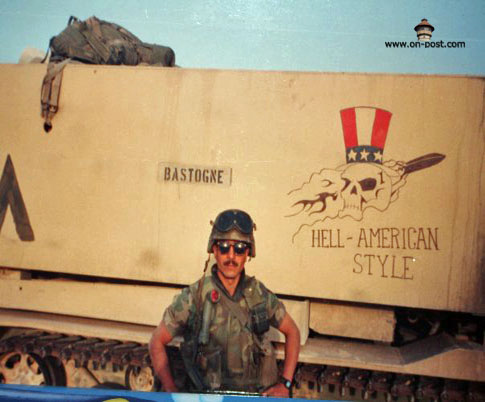
"Hell American Style"
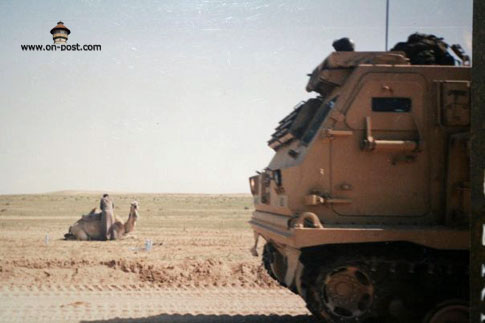
A lone Iraqi with his camel, and a Launcher on the prowl!
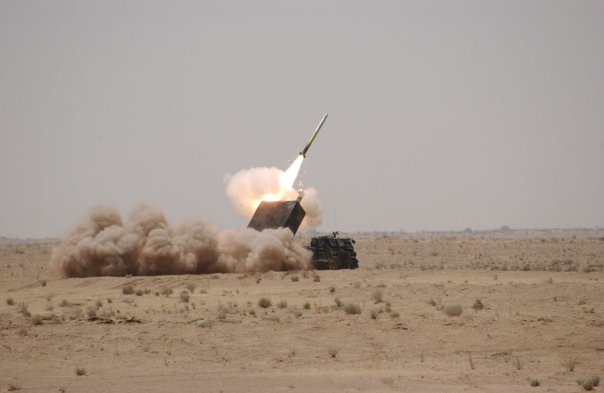
Steel Rain
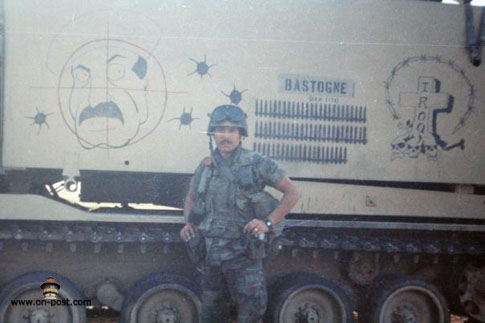
Got Saddam in the Crosshairs
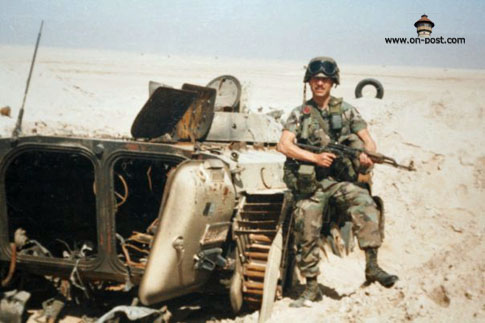
SFC Colon with an AK 47 and a destroyed BMP during Desert Storm
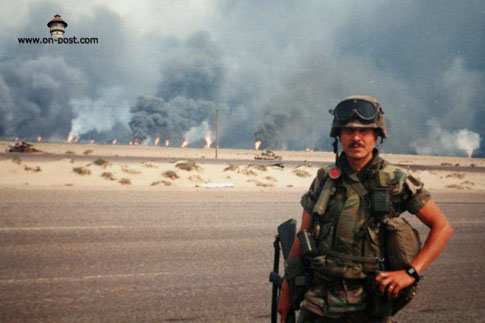
Burning Iraqi Oil wells
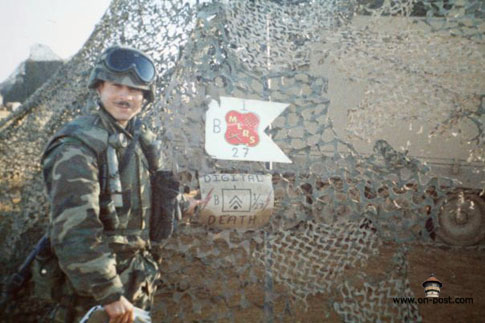
B Battery 1/27 Fa
Digital Death
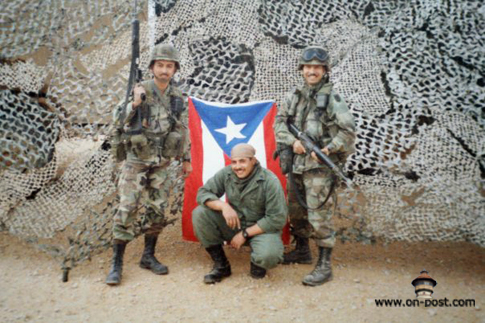
Juan Bermudez and I found a Puerto Rican flag!
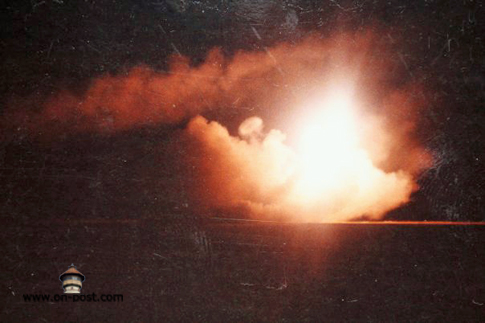
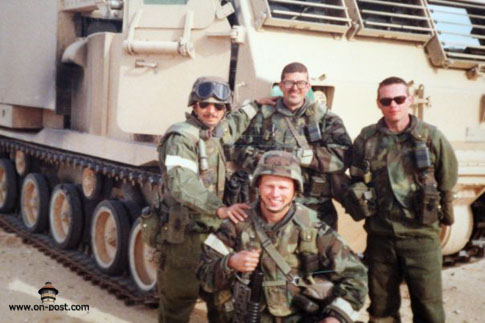
Photo with one of the MLRS Sections in my Platoon. The Soldier kneeling, SFC Rhen. Was killed in action in OIF I. Rhen was an awesome Soldier, who in a short time, had become a Sergeant First Class, running his own platoon. He was KIA when his vehicle was believed to be the enemy by our own forces (Refered to as "Friendly Fire").
Actually, it is not friendly, when it is coming down on you...
Rhen, You will never be forgotten...
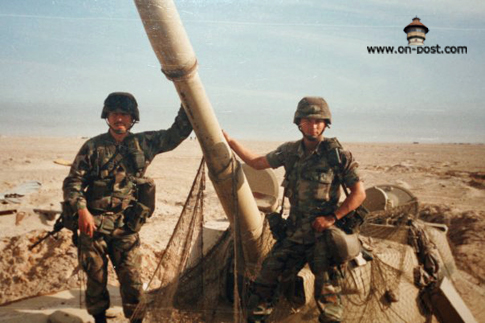
War Trophy
Larry Lassley and I
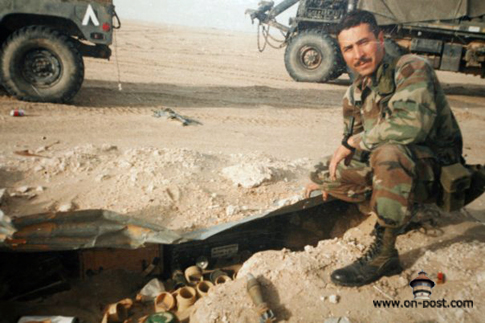
More enemy ammo.
Used with permission from © Osvaldo Colon-Melendez 2012
_________________________________
All Pictures by © Erik Asher
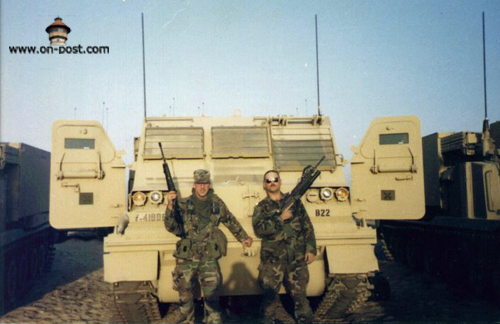
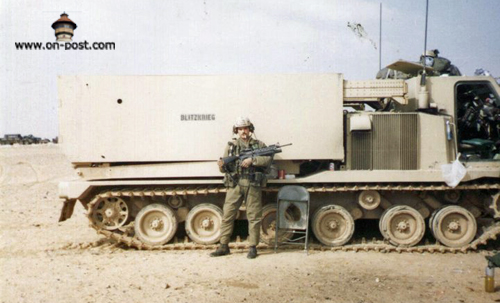
B22 "Blitzkrieg"
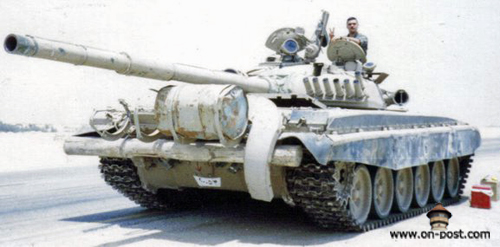
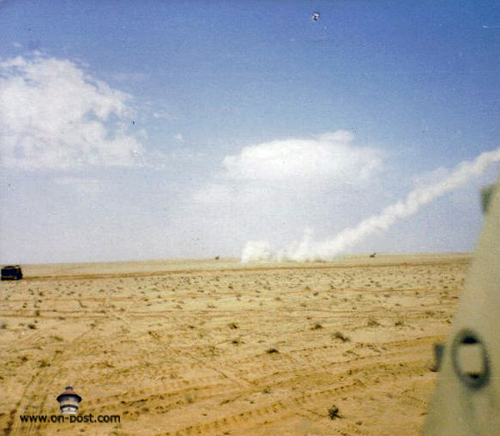
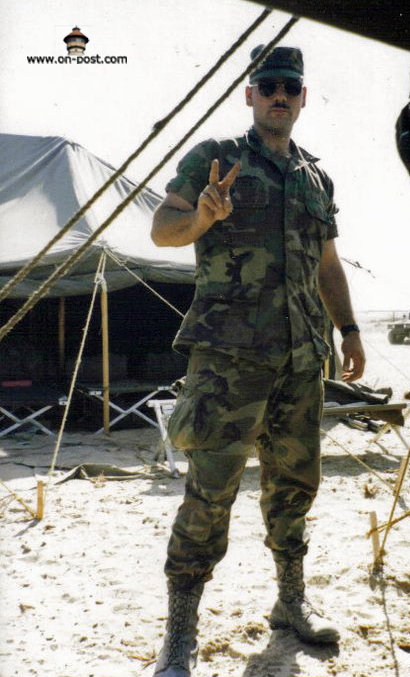
Erik Asher
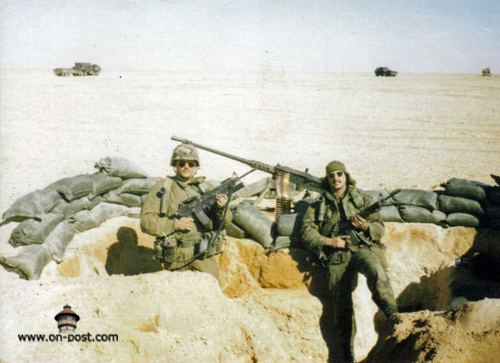
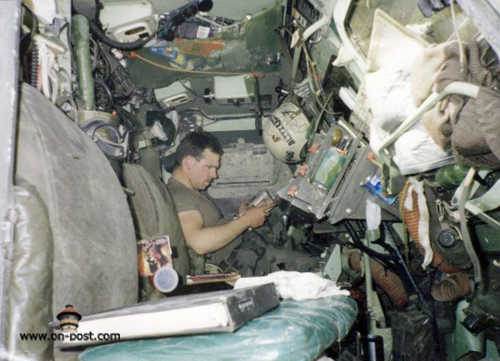
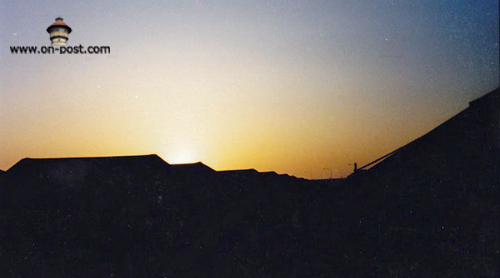
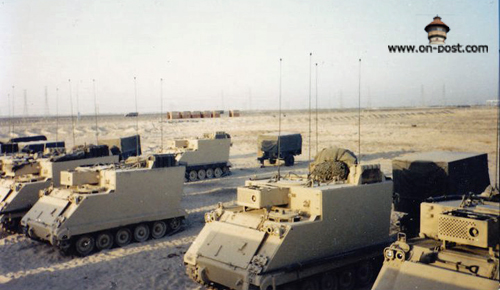
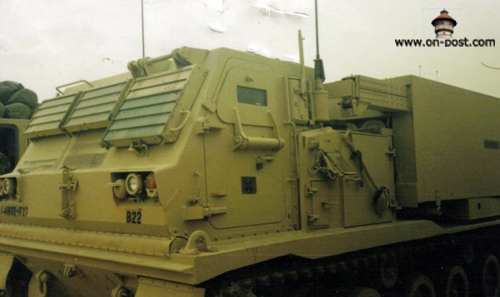
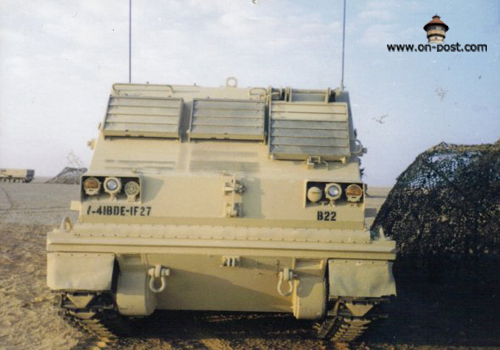
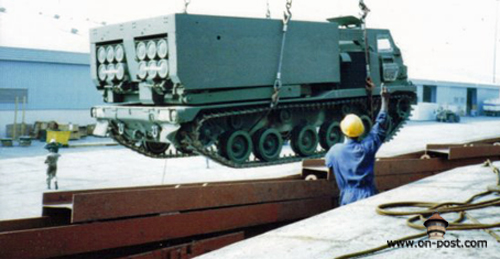
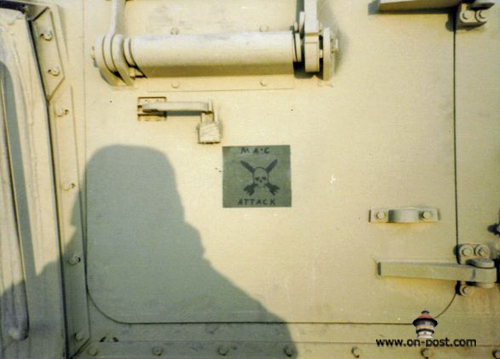
Used with permission from Erik Asher ©2011
_________________________________
C Battery
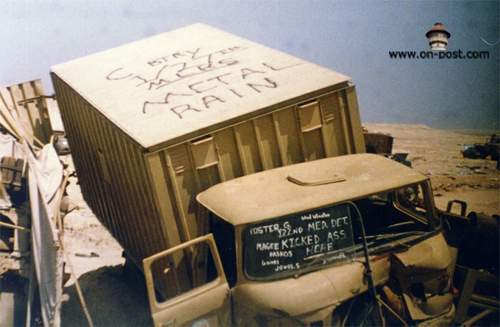
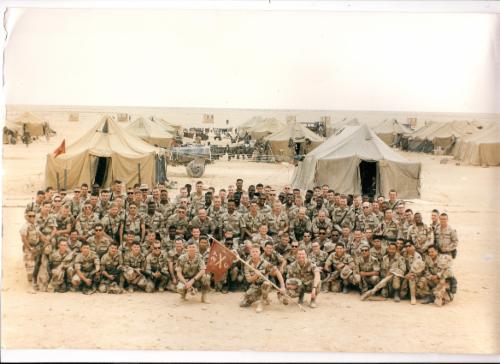 ©Shane Motty
©Shane Motty
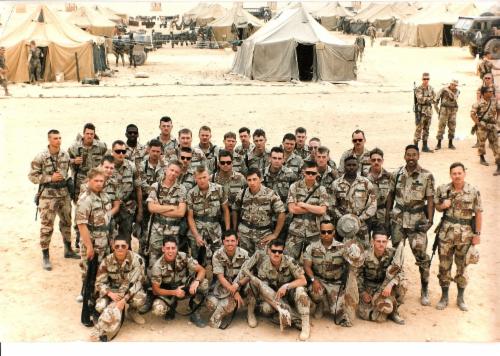 ©Shane Motty
©Shane Motty
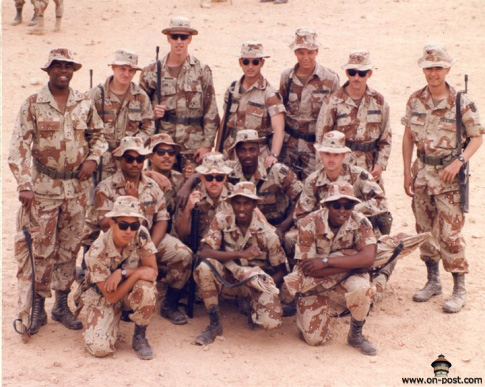
1st Platoon:
PLT SGT- SFC BOONE........PLT LDR -- LT SCERONO
C 11 --SGT HAYSLETT, SGT DULANEY, SSG NORRIS
C 21 --SPC ROLAND, SGT HAYES, SSG MILLER
C 31 --PFC KERN, SGT SOLIEGH, SSG GUTMAN
FDC --SGT REMEREZ, SPC THOMAS, PFC POMPEY
RECON --SGT CLOKE, CPL RYAN
__________________________
All Pictures by © David Hayslett 2011
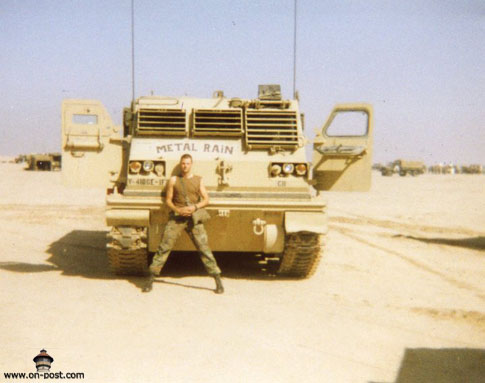
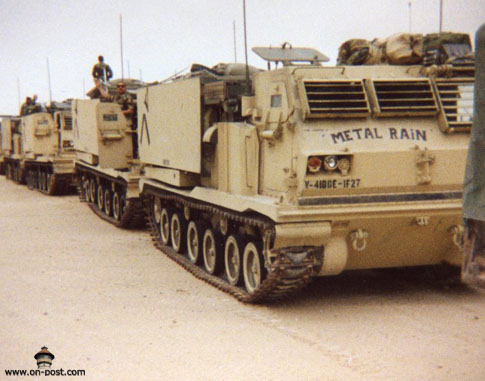
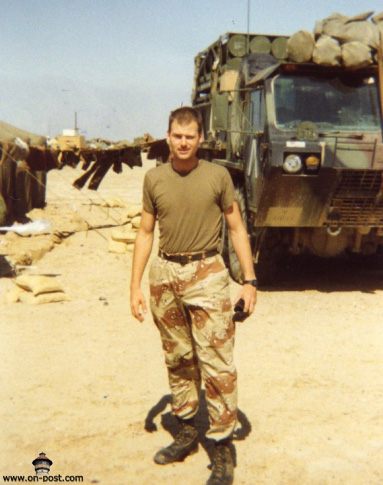

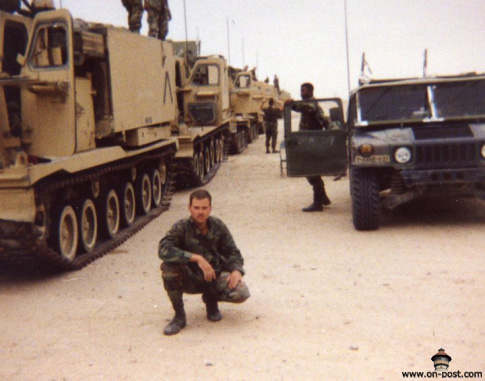
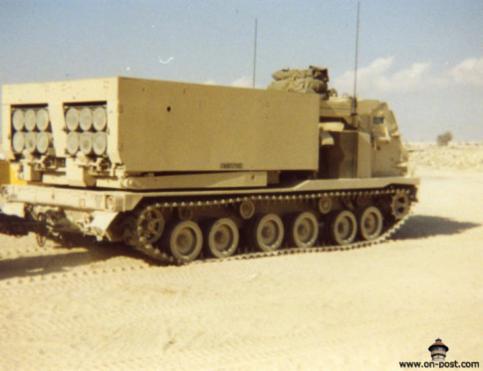
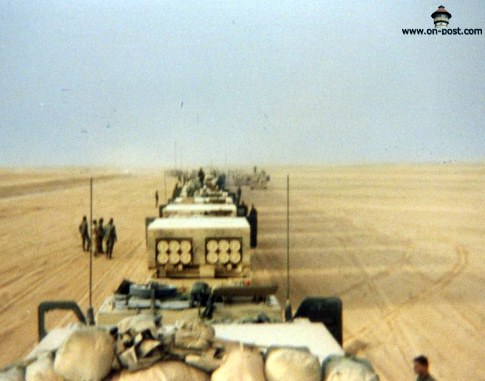
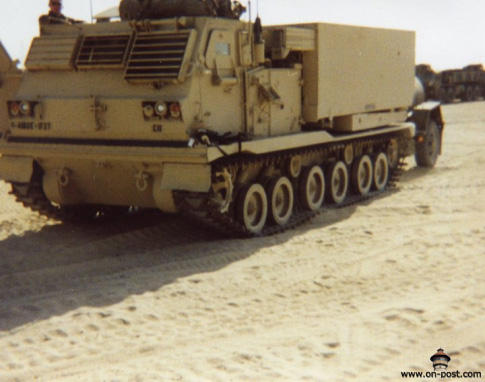
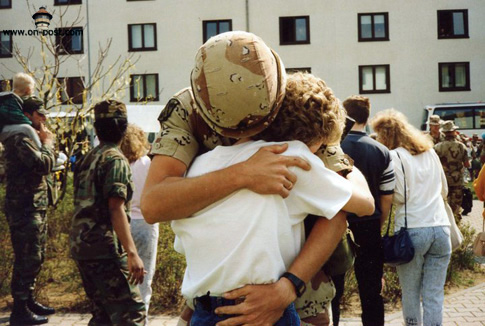
Home at last

Please serve cold.....
Used with permission from David Hayslett ©2011
___________________________
Rockets in the Desert
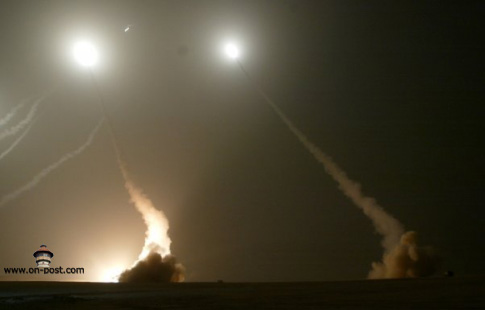
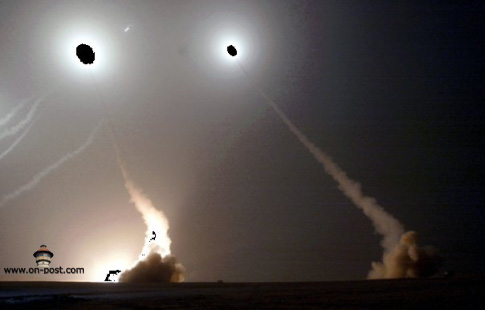
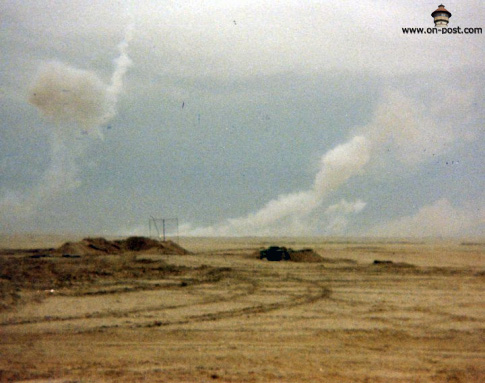
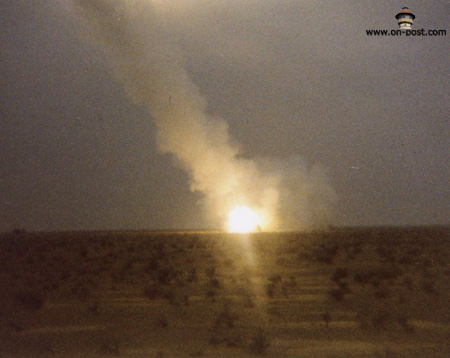
________________________________
Operation Iraqi Freedom
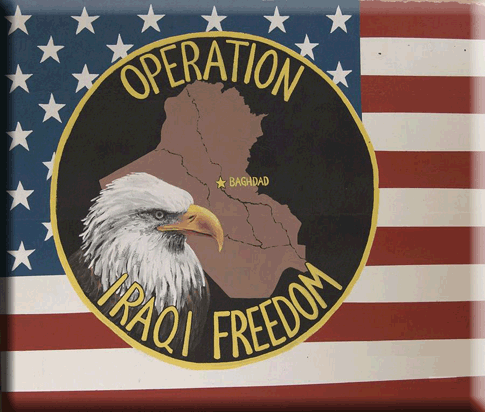
 Babenhausen soldiers' tally: Two months, 18 million pounds of munitions recovered By Sandra Jontz, Stars and Stripes European edition, Sunday, June 22, 2003 BAGHDAD, Iraq — It’s been months since U.S. missiles stopped falling on Baghdad, but field artillery soldiers who arrived in Iraq before the shooting started still aren’t going home. They have another mission ahead of them. Soldiers from the 41st Field Artillery Brigade from Babenhausen, Germany, are part of Task Force Bullet, an effort to clear weapons and ammunition from a smattering of public places in Baghdad. In two months, the Babenhausen soldiers have collected 18 million pounds worth, pulling them from houses, mosques, churches and schools, said brigade commander Col. Chuck Otterstedt III. “This is definitely a nonstandard mission,” Otterstedt said. There are two field artillery groups operating in the country, the 41st and the 17th Field Artillery Brigade out of Fort Sill, Ga. “We’re going into public places and trying to get [ordnance],” said Maj. Michael Gabel, the 1st Battalion’s operations officer. “It’s a public safety issue, and we’ve probably saved a hell of a lot of lives.” The soldiers have found it all, from small arms ammunition to SA-2 and SA-7 surface-to-air missiles. But there have been no signs of the elusive weapons of mass destruction that President Bush used as a reason for committing U.S. troops to the war. “We’ve seen a lot of things that I’ve never seen before, but no WMD,” said Spc. Ayofemi Terrence, 20, an ammunition specialist with 608th Ordnance Company out of Fort Benning, Ga. “You’d think we would have come across some, and we’ve been looking for some time. I’m not quite sure we’re going to find them.” “We’re out doing something good here,” said Pfc. Josh Rogers, 25, adding he was “kind of shocked” to learn of the change in mission. “We have no training for this at all.” But the soldiers are learning quickly and have tackled the job with a zeal he’s not seen before, said battalion commander Lt. Col. Jeff Lieb, 41, who pitched in to lift 120-pound boxes of munitions — leading by example. The soldiers have learned the proper way to stack rocket propelled grenades and to stay away from ammunition labeled with a black band, indicating the presence of highly explosive white phosphorous. “Make no mistake about it, this is a dangerous mission,” Lieb said. The captured ammunition and weaponry are taken to two locations: a quarry named Red Rocket, which, by convoy, is about 90 minutes north of Baghdad, where it is destroyed; or a former Iraqi military base in Taji, where it is stored to be turned over to the follow-up Iraqi army. About 30 percent of what is found and recovered can be saved. The soldiers of the 41st temporarily make their home in a desolate camp named Dogwood, about an hour’s drive southwest of Baghdad. There are no trees, no picturesque views, just bland-colored sand, a talc-fine powder the wind whips up and deposits in ears, tear ducts, mouths. There’s no running water; electricity comes from the noisy generators that pepper the compound. But they are a creative and resourceful bunch: They jury- rigged a pump — normally used to spray down and decontaminate vehicles of chemical and biological agents — to a water buffalo that pumps water to a tank where water is heated by the sun and then flows to three faucets in three plywood boxes. Voilà: showers. Hubcaps, iron plates and the like have been welded to steel bars for weights the soldiers lift during their free time. The soldiers are almost done with their search and disposal mission. “We’re days away from being complete in removing enemy ammunition out of Baghdad,” Gabel said. “We’re coming to the end of the show here.” And yet, they still aren’t going home. Instead, they are moving west, Otterstedt said. “I do what I’m told to do, and I’m used to changes. It’s no big deal,” said Pfc. Tommy Martinsen, 28, a surveyor. Some are teaching local civilians the skills they picked up, to eventually transfer duties to civilian contractors. They want to pass on their knowledge, but they also have an ulterior motive. “The sooner they learn to handle these,” said Sgt. Ferdinand Berrios, 26, “the sooner we get to go home.” 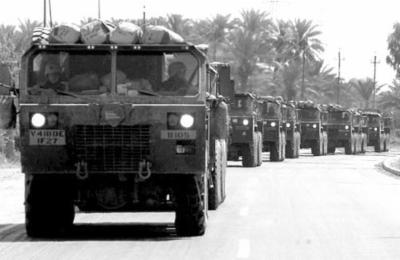 Michael Abrams / S&S Heavy Expanded Mobility Tactical Trucks, or HEMTTs, of the Babenhausen-based 41st Field Artillery Brigade convoy out of Baghdad on their way to Red Rocket, a quarry where Iraqi munitions are held before being destroyed. 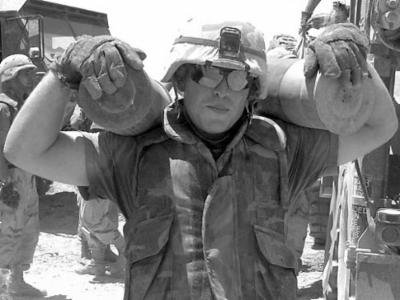 Michael Abrams / S&S Pfc. Bryan Kirkland of the 41st Field Artillery Brigade shoulders two Iraqi artillery shell propellant bags at Red Rocket. 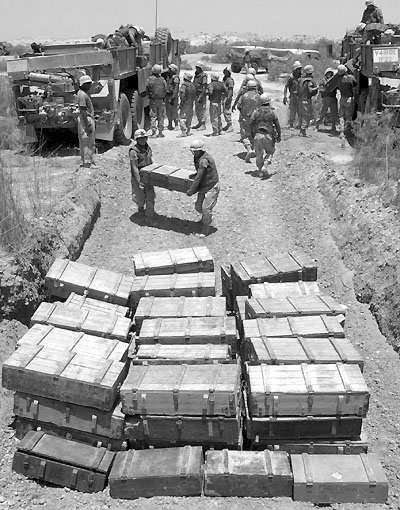 Michael Abrams / S&S The soldiers of the 41st Field Artillery Brigade unload Iraqi munitions at Red Rocket, a quarry northwest of Baghdad. The munitions are kept there until they are destroyed. 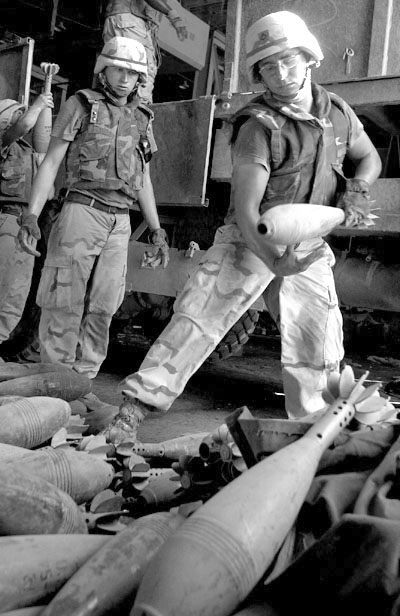 Michael Abrams / S&S Spc. Mitch Kruse, left, waits for Pfc. Anthony Pledger to hand him a mortar shell as the two 41st Field Artillery Brigade soldiers load up Iraqi munitions at Camp Abel. 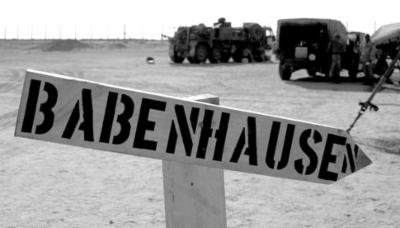 Michael Abrams / S&S The soldiers of the Babenhausen, Germany-based 41st Field Artillery Brigade have mainly one thing on their minds at the moment, and this sign at their camp at LSA Dogwood points there.Used with permission from Stars and Stripes. ©2003,2013 Stars and Stripes |
________________________________
 Germany-based 1st 27th rocketeers in South Korea to take on Rocket Valley By Seth Robson, Stars and Stripes European edition, Saturday, March 19, 2005 ROCKET VALLEY, South Korea — Germany-based rocketeers from Battery A, 1st Battalion, 27th Field Artillery Regiment trained in South Korea this week on the latest multiple launch rocket systems as part of the annual Reception, Staging Onward Movement and Integration exercise. Thousands of U.S. troops, from both on and off the Peninsula, are participating in RSOI and another exercise, Foal Eagle, this month. The Babenhausen, Germany-based 1-27 soldiers, who normally train on older M270 multiple launch rocket system (MLRS), arrived in South Korea two weeks ago and started training on the 2nd Infantry Division’s state-of-the-art M270A1 MLRS, said Battery A commander Capt. Will Daniel, 32, of Buckhannon, W.Va. On Thursday, they fired the M270A1 for the first time at Rocket Valley, a training area near the Demilitarized Zone. Each M270A1 launcher can fire up to 12 rockets in quick succession. The main advantage of the newer MLRS is its ability to move into position and fire more quickly than the M270, Daniel said. “It is a matter of seconds, whereas the older models take two or three times as long,” he said. Nearby, a tracked MLRS prepared to move along a muddy road in Rocket Valley — a steep tree-filled ravine with a small stream running down the middle. The Grafenwöhr training area where 1-27 fires the MLRS in Germany has a couple of rolling hills, but it is flat compared to Rocket Valley, Daniel said. “It doesn’t make a whole lot of difference. It is just a different firing solution,” he added. Battery A fire direction controller Sgt. Michael Pulbrook, 26, of Los Angeles, relays commands to MLRS crews depending on the type of round required and the type of mission. The launchers can shoot short-, medium- and long-range missiles. They can suppress enemy air defenses so helicopters can move into an area, do counter fire against enemy artillery units or go after targets of opportunity, he said. Shortly after he spoke, the MLRS units moved into firing positions in the valley. When the command was given, the rocket tubes pointed skyward at about a 45-degree angle and spun to face their targets at the far end of the mist-shrouded valley. Suddenly three brightly glowing rockets streaked through the sky, leaving smoky white vapor trails in their wake. The rocket shoot was the culmination of weeks of work for Battery A supply specialist Spc. Joey Correnti, 25, of Red Desert, Wyo., who arrived ahead of the unit and assembled the equipment, vehicles and field rations for more than 80 soldiers. Correnti said troops in South Korea have a different attitude from GIs in Germany. “The attitude is different because they have to be ready to go in a minute. We are a go in 72 hours to a week in Germany, but these guys would roll up the hill in an hour and a half and put rockets down range,” he said. 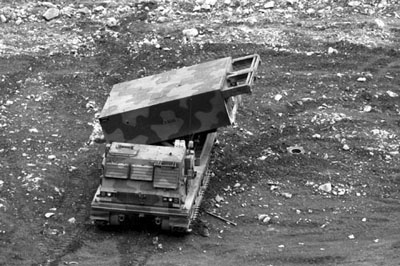 Seth Robson / S&S A multiple launch rocket system crewed by soldiers from Battery A, 1st Battalion, 27th Field Artillery Regiment prepares to fire during training exercises at Rocket Valley, South Korea, on Thursday.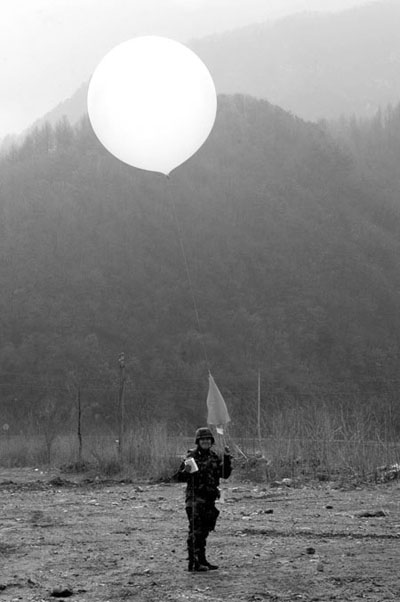 Seth Robson / S&S A soldier from Headquarters Headquarters Battery, 2nd Infantry Division Artillery prepares to launch a weather balloon during Thursday’s training.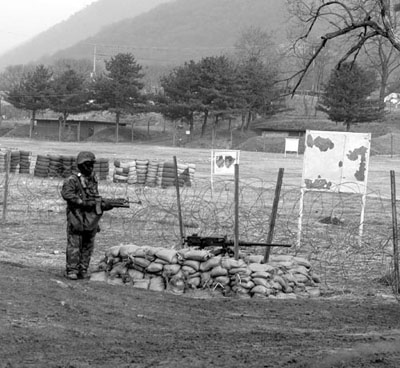 Seth Robson / S&S A U.S. soldier stands guard during the exercise. Used with permission from Stars and Stripes. ©2005,2013 Stars and Stripes |
| ‘Gridsmashers’ blast through Rocket Valley ROCKET VALLEY TRAINING AREA Republic of Korea 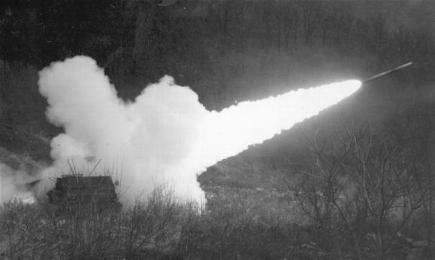 Photo by Yu, Hu Son Pfc. Giancarlo Casem Indianhead staff April 4th Faced with new terrain, different weather and weapons systems, the “Gridsmashers” had their hands full, but still carried out their mission. Soldiers of 1st Battalion, 27th Field Artillery Regiment, conducted a Return Staging Onward Movement and Integration live-fire exercise at the Rocket Valley training site, March 17. “It is a great training opportunity,” said Capt. William Daniel, commander, A Battery, 1st Bn., 27th FA. “Being in Korea is much more of a real world mission. It definitely gets our attention.” The Multiple Launching Rocket System unit from Babenhausen, Germany, called the 2nd Infantry Division their home during the RSOI exercise. Each MLRS fired three rounds. The first round was a safety shot, to ensure that all safety measures were in effect. The second mission required the crews to fire on command while the third had them all hit the impact area at the same time. The Soldiers only had a matter of a week or two to get acclimated to their new weapon systems and be qualified to standard, Daniel said. The operational tempo of the Warrior Division was noticeable to the “Gridsmashers.” They also admired the Warrior Division Soldiers’ fortitude. “The op tempo here is much higher, has a faster pace,” said Spc. Joey Correnti, 1st Bn., 27th FA. “The attitude is much higher, these guys are ready to go.” Correnti works in the supply section of the battery and was part of an advance party. He was tasked to inventory equipment his unit would be working with. The advance party was responsible for other logistical issues such as obtaining billets, food, weapons, vehicles, tools and, more importantly, the MLRS for the Soldiers. “There were a lot of things we had to do before the rest of the Soldiers got here,” Correnti said. “We had to make contacts and build relationships with new people.” This is Correnti’s second time in Korea, the first time was as a tourist in 1997. The changes are remarkable, Correnti said. “It is a lot different now,” he said. “ It is inspiring to see the Koreans building up their infrastructure. I am very pleased with the changes. It seems like they are getting healthier.” The advance party also performed reconnaissance on the mountainous terrain of Rocket Valley. “There are some differences,” Daniel said. “The firing points in Germany are flatter with a few rolling hills, so we need different firing solutions.” With the firing points being so close together, the “Gridsmashers” had additional safety issues that would not be a factor back in Germany, said Staff Sgt. Larry Grijalva, 1st Bn., 27th FA, MLRS crew launcher chief. “Safety is a big issue,” he said. “There is more safety involved. The firing points are a lot closer.” During the morning of their live-fire exercise, the firing line was stopped due to the fog. The MLRS crews had to wait until the fog cleared up enough so that range control could actually see the impact zone miles away from the firing points. As soon as they were given the go ahead, the “Gridsmashers” did not take long to live up to their name. In a matter of minutes the training rockets blasted out of the MLRS and thundered through Rocket Valley at speeds up to match two. The “Gridsmashers” M270A1 MLRS were provided by Division Artillery and were a vast improvement over their own, older M270 MLRS back in Germany, Daniel said. “The M270A1s are considerably much faster,” he said. “Ours take two to three times longer – there really is no comparison.” The “Gridsmashers” also noticed the Warrior Division Soldiers’ high level of morale. “Both the Warrior standard and the motivation level is high" Grijalva said. "It is outstanding". Used with permission from Indianhead ©2005,2013 Published in the interest of the 2nd Infantry Division community |
________________________________
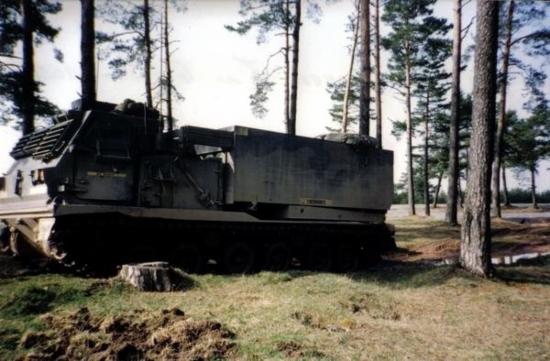
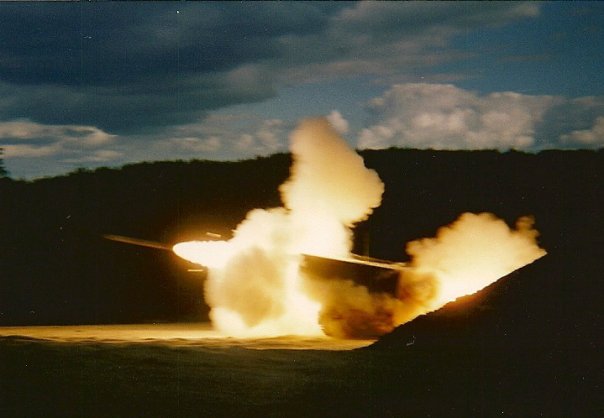
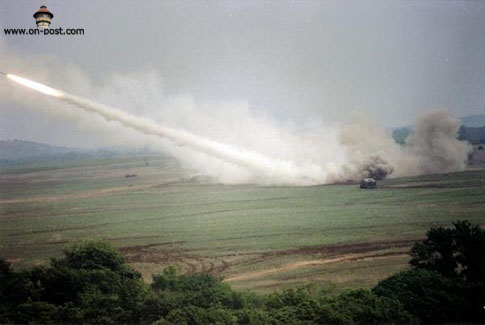
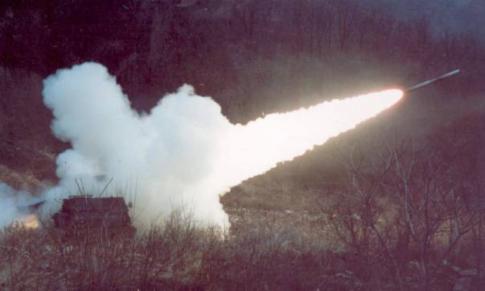
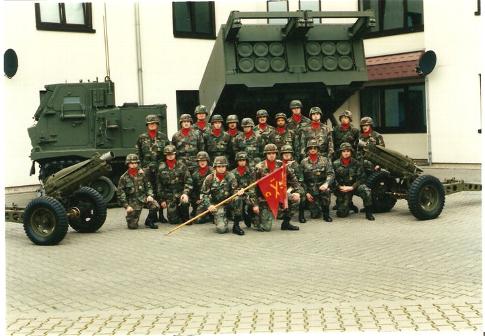
C Battery 1/27FA
-1993-
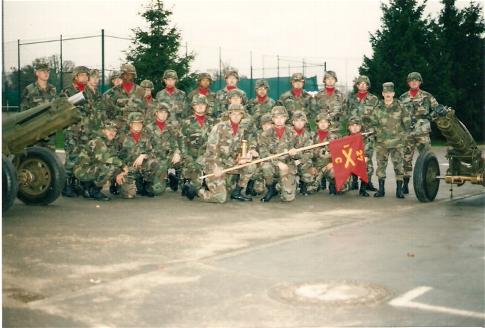
This was the salute team that attended the Change of Command Cermony for General John Shalikashvili and General George Joulwan.
Augsgurg Germany
October 1993
Used with permission from David McLain ©2011
____________________________________
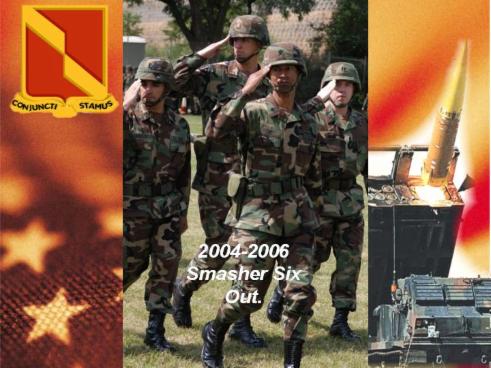
_____________________________________________________________________________________________________________________
Graphics,
Articles and photos on this web site are posted by permission of their
owners and are for viewing only. They are not for general distribution,
nor for use on other websites, unless permitted by the web master or the
original owner. If you find any files on this site that you believe are
unauthorized, please contact the web master immediately so that the
issue can be resolved.
___________________________________________________